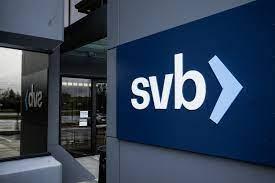
How the Silicon Valley Bank Collapse Revealed a Dirty Secret About Corporate Cash Management
How the Silicon Valley Bank Collapse Revealed a Dirty Secret About Corporate Cash Management
March 14, 2023
By John H. Robinson, Financial Planner/Founder Financial Planning Hawaii and Fee-Only Planning Hawaii
The FDIC takeover of Silicon Valley Bank (SVB) is a fascinating story that should serve as a cautionary tale for consumers and businesses. I say “should” because the bailout announced by Federal Reserve Chairman Jerome Powell does much to negate that message, but more on that later.
One of the reasons why I find this story so compelling is that the collapse was triggered by ill-fated investment decisions made by the bank’s management team led by SVB CEO, Greg Becker. One of the ways banks maintain profitability is by investing consumer deposits to earn a greater rate of return than they are paying on deposits. They may do this either by lending or by investing the funds. However, bank regulations restrict investments to conservative investments such as investment-grade corporate bonds, treasuries, and mortgage-backed securities.
Is it Wise to Invest in Long-Term Bonds When Interest Rates Are Near Historic Lows?
SVB was flush with literally billions of dollars of cash from Venture Capital Firms, Hedge Funds, and well-funded technology start-ups. The trigger for the bank’s collapse was the bank management's decision in 2020 and 2021 to invest billions of dollars of depositors’ cash into long-term treasuries and government agency securities at a time when interest rates were at their lowest levels in history and could literally go no lower! While it is true that the securities SVB purchased carry virtually no risk of default, what appears to have been lost on SVB’s Board is that the market value of ALL bonds – even treasuries – is subject to interest rate risk when rates rise. A 1% rise in interest rates may produce a double-digit decline in the value of long-term (20-30 year) bonds, and since the Fed started raising rates in early 2022, rates have risen far more than that.
It is positively mind-boggling that the management team of a bank with more than $200 billion in assets did not understand the magnitude of the risk they were taking by making these investments. What makes it even more shocking is that, in addition to his role as CEO of Silicon Valley Bank, Mr. Becker also was on the board of directors for the San Francisco Federal Reserve! If a lowly financial planner like me could see this trainwreck coming a mile away, it is unfathomable that someone with Mr. Becker’s background and experience could not. [See I was Right about Interest Rates (Financial Panning Hawaii Blog)] Mr. Becker was quietly removed from his job at SVB and his post on the Federal Reserve Board over the weekend.
Was the FDIC Asleep at the Switch?
Another eye-opening element of the SVB story is how quickly the bank collapse unfolded. As we have learned, as soon as the news trickled out that the bank was exploring ways to raise new capital to make up for the losses it incurred on its bond portfolio, depositors rushed en masse to pull their deposits. One of the reasons for the creation of the Federal Deposit Insurance Corp was to provide a guarantee that would prevent runs on troubled banks. The reason for the run on SVB was that a staggering 90% of SVB’s roughly $200 billion of depositor assets was above the FDIC limits! The vast majority of these uninsured deposits were corporate cash management accounts.
This incredible statistic raises two questions. First, why didn’t the uninsured deposits statistic jump off the page on the SVB’s regular financial reports to the FDIC? Second, why would the management teams of all of those companies be so foolish/irresponsible to hold millions of dollars in corporate accounts that are only insured up to $250,000?
Was the Fed’s Intervention to Protect SVB’s Depositors a Sound Move?
Soon after the FDIC stepped in to Assume Control of SVB last Friday (March 10, 2023), it became clear that additional unusual intervention measures would be required because the collapse resulted in the freezing of all depositor accounts. Given that most of the largest depositors are corporations employing thousands of people, the freezing of their corporate cash accounts would effectively eliminate their ability to make payroll and pay for ongoing operating costs. Further, the size of the uninsured deposits was still far greater than the bank's losses (i.e., the depositors’ money was not really “gone.” Based on these facts, the federal government made the decision to unfreeze depositor accounts and also to guarantee that all depositors' accounts would remain whole.
When queried about whether the government will step in to bail out SVB, Treasury Secretary Janet Yellen said in an appearance yesterday on ABC News’ “Face the Nation,
“During the financial crisis, there were investors and owners of systemic large banks that were bailed out. And the reforms that have been put in place mean that we're not going to do that again. But we are concerned about depositors and are focused on trying to meet their needs.”
While I fully appreciate the importance of freeing up the deposits of these companies to enable them to continue operating, freeing the management of these companies from any financial liability for their incomprehensible irresponsibility in ignoring FDIC coverage limits sends the wrong message. In my opinion, a better approach would have been to force the depositors to share in the bank’s losses. Every consumer in America knows what the FDIC coverage limits are and knows that their deposits above the limits could be lost in the event of a bank failure. While Janet Yellen, Jerome Powell, et. al. are technically correct in noting that this is not a bailout because the bank itself is not being bailed out, the use of government funds to protect the deposit of the uber-rich Silicon Valley Tech crowd is a different kind of bailout that should arouse the ire of the rest of us.
The Dirty Secret of Corporate Banking
In addition to the need to pay more attention to individual bank’s uninsured deposits statistics, another common banking practice that merits revisiting is the incentives banks provide in terms of providing favorable lending terms to companies in return for the companies’ promise to keep all of its corporate cash with the bank, even if such deposits exceed the FDIC coverage limit. In SVB’s case, the bank had a well-earned reputation as being a willing lender to riskier corporate ventures. It made the bank the go-to institution for the tech crowd and the management teams of these companies clearly were willing to ignore FDIC limits to gain access to lower-cost financing.
While SVB is likely an extreme example of this practice, it is commonplace. For example, in response to my recent articles encouraging small business owners to put their corporate cash to work in treasuries, one client told me that when he mentioned my suggestion to his banker, the bank offered to pay him 3.5% interest for one year on more than $1 million in corporate cash. While this is still well below what can be obtained by purchasing treasury bills, the client expressed the need to keep the cash at the bank to preserve the lending relationship.
What Will be the Impact of the SVB Failure?
My first reaction to the news of the SVB failure was that the salient lesson to all consumers and especially to business owners is that you should never keep more than the FDIC limit and bank deposits. To me, the immediate impact of this message ought to be an outflow of uninsured cash deposits at banks into T-bills and government securities money market funds at investment firms. Support for this prediction can be found in the surprisingly swift messaging sent by Central Pacific Bank to its corporate clients just one day after the SVB failure. CPB is the local bank that holds Financial Planning Hawaii’s corporate accounts. The letter was sent to reassure corporate clients that it is not facing the same problems as SVB. Unfortunately, I believe the Fed’s decision to bail out uninsured depositors offers little incentive for either banks or corporations to alter their behavior or decision-making.
As a long-in-the-tooth financial planner, I worked through the S&L failures of the early 1990s, the implosion of mega-hedge fund Long Term Capital in the late 1990s, and the sub-prime mortgage and auction rate securities collapses that sparked the bank failures at the heart of the 2008-2009 financial crisis. After each of those crises, regulatory policies were reviewed and measures were taken to ensure that the conditions that created the problems would not recur. As this latest debacle reveals, new banking crises continue to emerge, but the causes are different each time. What is particularly disconcerting this time around is that the causes of the SVB collapse do not require a Ph.D. in econ to understand. In fact, the causes were remarkably simplistic – extraordinarily misguided, naive investment decision-making by SVB’s board, the FDIC asleep at the switch in failing to recognize SVB’s extraordinarily high percentage of uninsured deposits, and the irresponsibility of corporate depositors in ignoring the risk of uninsured deposits. In my opinion, the loose-money response by the government does little to instill confidence that this will finally be the last banking crisis.
John H. Robinson is the owner/founder of Financial Planning Hawaii, Fee-Only Planning Hawaii, and Paraplanning Hawaii. He is also a co-founder of fintech software-maker Nest Egg Guru.
DISCLOSURES
Securities offered through J.W. Cole Financial, Inc. (JWC) member FINRA/SIPC. Advisory services offered through Financial Planning Hawaii and J.W. Cole Advisors, Inc. (JWCA). Financial Planning Hawaii and JWC/JWCA are unaffiliated entities
Fee-only financial planning services are provided through Financial Planning Hawaii, Inc. DBA Fee-Only Planning Hawaii, a separate state of Hawaii Registered Investment Advisory firm. Financial Planning Hawaii does not take custody of client assets nor do its advisers take discretionary authority over client accounts.
The information contained herein is general in nature. Neither Financial Planning Hawaii nor J.W. Cole provides client-specific tax or legal advice. All readers should consult with their tax and/or legal advisors for such guidance in advance of making investment or financial planning decisions with tax or legal implications.

